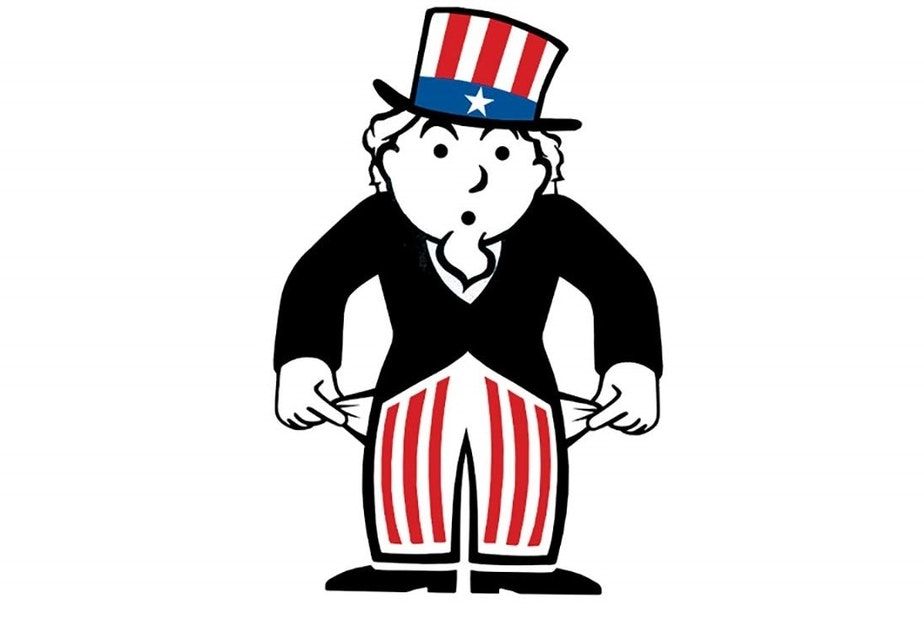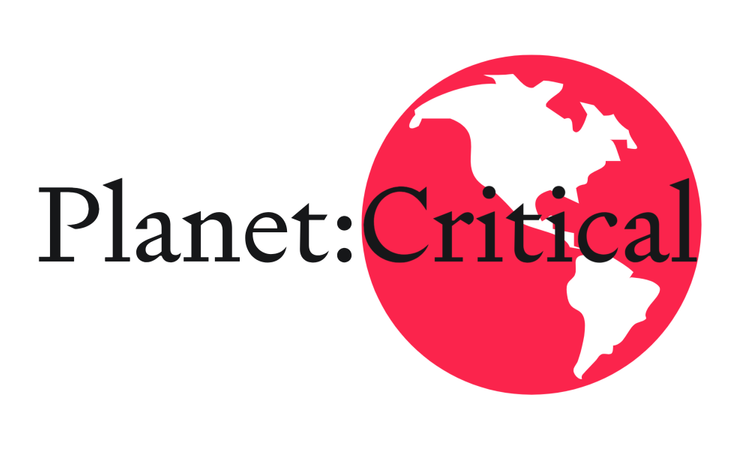The Deficit Myth (Stephanie Kelton)

Since the American Rescue Plan (ARPA) passed, a mini-storm of debate has broken out about about inflationary pressures (an article by Claudia Sahm on INET). ARPA made no reference to how the program would be funded, in particular, there is no reference of the deficit. This has led those who believe in modern monetary theory or functional finance (the original Abba Lerner version), the topic of this post, to rejoice (see for instance this contentious post by JW Mason, and Paul Krugman's reply).
This is all to say that I was not entirely familiar with the principles of modern monetary theory (MMT). Enter Stephanie Kelton, whose book The Deficit Myth is an Amazon top-seller on just this topic. In what follows I break down what the book is about, including my own thoughts, and conclude with a brief look at how MMT has been applied.
What is the book about
In one sentence, this book is about debunking the myth that we need to know how we should pay for policy and we shouldn't conduct fiscal policy if it increases the deficit if the government in question is a monetary sovereign.
Let's dive into the detail. The motivation for this book is the political obsession with needing to pay for all policies without increasing the national deficit. Allegedly, the U.S. is going broke due to its deficit. For now, let us conveniently skip the fact that the U.S. has operated at a deficit almost continuously since 1930 (FRED) without going "broke". As Kelton immediately notes in the introduction:
In almost all instances federal deficits are good for the economy. They are necessary.
Kelton goes against these myths by taking the lens of modern monetary theory (MMT). The disclaimer: these arguments apply only to monetary sovereigns who can print their own currency (e.g. the U.S., UK, Japan, EU as a whole and Australia to name a few). To quote the books thesis:
MMT radically changes our understanding by recognizing that it is the currency issuer—the federal government itself—not the taxpayer, that finances all government expenditures. [...] But the idea that taxes pay for what the government spends is pure fantasy
The original idea behind MMT was introduced by Abba Lerner as functional finance. And according to some, such as Paul Krugman, it hasn't changed much since. Whether or not that is true I cannot say, but it seems that perhaps the differentiator is that MMT (or at least Stephanie Kelton) provide policy recommendations
Someone will bring up MMT. After all this time, I still don't know what it is beyond functional finance — every time you try, you're told that you don't get it, and at this point I think it's mainly a marketing ploy. So never mind 9/
— Paul Krugman (@paulkrugman) March 17, 2021
Let's take MMT apart in the way Kelton does, by contrasting the ideas of MMT with common beliefs in the case of 6 common myths:
Myth: The government should budget like a household.
Reality: Unlike the household, the government issues the currency it spends
This is the central tenet of MMT, and is repeated frequently in the book. The U.S. is a monetary sovereign, it holds the monopoly on manufacturing dollars. It issues its own nonconvertible currency and only borrows in its own currency. Everyone else is simply a user of dollars, we need to earn dollars to spend them. The government can simply print money (or add a digital entry). The government also doesn't promise to exchange your dollars for anything (e.g. the gold-standard) and borrows only in its own currency.
The implication is that the U.S. government never needs to worry about paying for any of its actions (in dollar terms...). In other words taxes and borrowing do not need to precede spending, but rather spending precedes taxes and borrowing, i.e. the government spends dollars into existence. Intuitively, in order to tax you in dollars, the U.S. must first provide you with dollars. It has the monopoly on $ creation. An immediate response: cool, but then why should I bother paying taxes if the government doesn't need it. To quote Warren Mosler:
The tax isn't there to raise money. It's there to get people working and producing things for the government
The tax creates demand for the government's currency. To pay tax, you need to acquire currency. Without taxes (a penalized obligation to pay the government) a dollar is just a nice-looking piece of litter. Okay, if that's all why not have a very low tax rate? Spending a lot of money with low taxes would lead to strong inflation (next section) and taxes re-distribute wealth and income.
The implications: "Congress doesn't need to find the money to spend it. It needs to find the votes! Once it has the votes, it can authorize the spending". This is the way the American Rescue Plan came to be - the U.S. deficit or how to pay for it weren't mentioned. The votes were there, so the spending is there...
Next question: if the government creates money and we get taxed, why does the government borrow dollars by issuing treasuries? Through the eyes of MMT, bonds are simply a means for people to earn interest. To transfer "green dollars into interest-bearing yellow dollars". There are a few reasons: (1) deficits (borrowing) mean a surplus in the non-government economy (see next sections), (2) it allows policy to affect the interest rate (Central Bank actions), (3) it generates demand for dollars.
To sum it up: the government can just create money, we pay taxes to ensure the money is necessary and to redistribute, and borrowing generates a surplus, and allows for monetary policy. So why doesn't the government just spend a lot of money to pay for everything?
Myth: deficits are evidence of overspending.
Reality: for evidence of overspending look at inflation
So what about inflation? Inflation implies rising price-levels. If the prices rise faster than income, then we lose purchasing power. If you earn 100 today and pay 100 in rent, and your income grows by 1% to 101 while rent rises 5% to 105, then you can no longer afford it. Measuring and thinking about inflation is a broad topic, that I won't (can't) cover here.
Let's consider demand-push inflation, when the economy is at full employment and firm production can't expand to accommodate more demand this pushes up prices (if there is more money I can bid more on a scarce amount of goods). This form of inflation is the evidence of over-spending. So how should the government act? Kelton applies Abba Lerner's ideas:
To allow the private sector to come as close as possible to achieving full employment on its own and then to rely primarily on fiscal policy to make up any shortfall in total spending. With enough aggregate spending, he reasoned, policy makers could maintain prosperity by holding the economy at full potential through a permanent application of fiscal policy. [...] As long as any resulting deficits didn't push inflation higher, the deficit shouldn't be labeled overspending
We should manipulate taxes and spending to bring the economy into balance by adding (spending) or subtracting (taxes) to/from the economy. Does that mean tax cuts for all? Cuts can work IF they are enacted rapidly and target those with a high propensity to spend out of new income (lower and middle income). An oversimplified prescription: Inflation → raise tax or reduce expenditure. Unemployment → cut tax or spend more money fast
Stephanie Kelton and MMT do go further than this (perhaps the differentiator for MMT that Krugman was looking for?). Namely,
To supplement discretionary fiscal policy MMT recommends a federal job guarantee, which creates a nondiscretionary automatic stabilizer that promotes both full employment and price stability
How? The government announces a wage and benefit package for anyone looking for work but unable to find suitable employment. The government eliminates involuntary unemployment. If the government imposes a tax causing people to need to earn the currency, they should provide a means to earn the currency. What jobs? Those that benefit the community in which the people are seeking work utilizing the employees skills themselves (local council / government should decide). What is the effect? The minimum wage becomes effective. The minimum wage now is $0 (the wage available to the unemployed) - a job guarantee would set the minimum wage at $15 (pick a politically contested number of choice). The benefits? Employers get to hire from a pool of employed people and wages are stable and affected by government policy. To find out more about this, I suggest reading the work of Pavlina Tcherneva and colleagues at the Levy Institute.
Myth: National debt, we are all on the hook.
Reality: the national debt poses 0 burden
This chapter repeats a lot of the information from the first two, adding a conceptualisation of the government's obligations. Government deficits are termed borrowing but this is misleading - there is no real debt obligation. During the Obama administration there was a lot of news about China owning a lot of U.S. treasuries and therefore the U.S. was "on the hook" to China. According to MMT this should be conceptualized as China having a savings account with the Federal Reserve. The dollars are not originating from China, the U.S. isn't borrowing as much as it is supplying China with dollars and allowing them to be transformed into treasuries. Cue Warren Mosler: "The only thing we owe China is a bank statement"
The fear? China liquidates all its treasuries and drives the price of treasuries down. Issues: (1) doing so means China gives up a trade surplus, (2) the U.S. can manufacture dollars and use them to control treasury yields. They did something similar during World War 2 to keep interest fixed. Side note: there was a 15% reduction in Chinese treasury holdings that left the yields unchanged.
To summarize again:
In that sense, the currency issuer’s spending is self-financing. It’s not selling bonds because it needs the dollars. Bond sales just allow holders of reserve balances (green dollars) to trade them in for US Treasuries (yellow dollars). It’s done to support interest rates, not to fund the government.
Myth: Deficits crowd out private investment, making us poorer.
Reality: Fiscal deficits increase our wealth and collective savings.
What's this about? Essentially, deficits require government borrowing which means the government is in competition with other borrowers for a limited supply of savings. Borrowing costs increase, leading to private borrowers being unable to secure funding. Consequently, private investment falls, we have less capital goods, and thus end up less prosperous.
There is one crucial principle to understand: the government's budget isn't supposed to balance, our economy is. Its an accounting identity that goes as follows:
government balance + nongovernment balance = economy balance = 0
If the government injects 50 into the economy, and taxes out 40 then the government has a balance of -10 BUT the economy has a balance of +10. Therefore, if the government runs a deficit, the nongovernment sector must be running a surplus. Similarly, if the government is running a surplus it is taking out dollars from the economy. In purely financial terms, every fiscal deficit is good for someone (whom it will be good for is a political choice). Consequently,
fiscal deficits—even with government borrowing—can't leave behind a smaller supply of dollar savings
As mentioned, the sales of bonds are for the purpose of monetary policy - to control the interest rate (I believe Nathan Tankus might have more info on this). To let Kelton speak for herself: "The point is that without some explicit form of intervention (Central Bank & bond auctions) the fiscal deficits would naturally drive the short-term interest rate to zero." There isn't a pre-ordained relationship between deficits and interest rates, if the Central Bank wants an interest rate, that will be the interest rate. The Bank of Japan has had tight control over their yield curve for ages.
Myth: trade deficits mean the U.S. is losing.
Reality: the U.S. has a "stuff" surplus
Ah yes - one of Donald Trump's favorite topics: the U.S. has a big deficit that must be "fixed". Let's have a look at what The Deficit Myth says. First, the reason that the U.S. may feel like they're losing at trade is that there has been a steady reduction of jobs in the US. However, pushing the trade deficit to zero doesn't actually fix that nor is it necessary: "as long as the federal government stands ready to use its fiscal capacity to maintain full employment at home, there is no reason to resort to trade war"
We can expand our accounting equation to the following:
government balance + U.S. private balance + foreign sector balance = 0
Hence if the US presents 100 to the private sector and taxes back 90 then there is a surplus of 10 in the private sector and deficit of 10 with the US. If the private sector then spends 20 on foreign stuff, and gets back only 5 from the foreign sector (e.g. exports) then the private sector also runs a deficit of 5. Someone needs to supply more to the private balance. Cue fiscal policy. A private deficit is the consequence of the government deficit being below the trade deficit.
Here too, Kelton refers to Tcherneva and the federal job guarantee.
With a job guarantee, free trade is no longer a threat to full employment, and trade wars are no longer necessary to prevent unemployment.
Trade negotiations can then focus on labour standards and environmental sustainability, with the U.S. using market power to promote acceptable working conditions and environment standards worldwide
Let's see how that goes - I don't see a job guarantee emerging just yet.
In the second part of this chapter, Kelton touches on developing countries and trade. I will let her speak here:
As long as the rest of the world refuses to accept the currencies of developing countries in payment for critical imports, developing nations will be forced to borrow US dollars and other foreign currencies they don’t control. Not only does this undermine their monetary sovereignty, it can leave developing nations mired in a cycle whereby they sell domestic currency to get the foreign currency they need, driving down the value of the domestic currency and making those critical imports more expensive—which can easily lead to import-led inflation and even political turmoil
Her recommendation: allow developing countries to enhance their monetary sovereignty. This is against the common policy mix of austerity, pegging currencies, and tight monetary policy frequently applied.
Question: what would it look like if all countries accepted each other's currencies in payment for critical imports? How would exchange markets react? Would this cause more currency fluctuations?
One way to keep things stable is for the U.S. to use its hegemonic status to supply sufficient dollars to US private sectors to ensure full employment AND supply sufficient dollars so that the rest of the world can build up their reserves and protect trade flows. In essence - low stable interest rates to promote tranquility.
Myth: "Entitlement" programs like Social Security are financially unsustainable.
Reality: As long as the federal government commits to making payments, it can always afford the programs. What matters is our economy's long-run capacity to produce real goods and services people will need
I think after the preceding discussion this should be self-explanatory. This chapter overwhelmingly deals with the political contortions present in U.S. budgetary discussions about Social Security and Medicare.
The final words
Kelton suggests we focus on the deficits that matter namely:
- the savings deficit (the median retirement savings is $0 and ~40% of Americans say they cant come up with $400 in an emergency),
- the health-care deficit (the U.S. has the lowest life expectancy and highest infant mortality in developed countries, many people can't afford medical services),
- the education deficit (45 million people burdened with student debt, while for 60% of college graduates wages today are lower than in 2000),
- the infrastructure deficit (the American Society of Civil Engineers (ASCE) gives a D+ grade to America’s infrastructure),
- the climate deficit (at 3 degrees warming 550,000 people face chronic inundation by 2045, monthlong heat waves, 96/204 basins supplying fresh water could fail to meet monthly demand in 2071, 50% of global population will live in water-stressed areas by 2025),
- the democracy deficit (inequality in the wealth realm have widened inequalities in the political realm. When political preferences diverge, it is those of the wealthy that are met).
She also proposes solutions, though the prescriptive solutions beyond a job guarantee are missing.
- Ensuring that there are fully-funded automatic stabilizers that are built into the government - shock absorbers for the economy. Her preference: a universal job guarantee programme to act as an fully-funded automatic stabilizer across the business cycle
- Proposal for the green new deal: "allow electric utilities to sell to the government at book value any high-emission generator, no matter its age, in order to remove those costs from rates [...] This would free up private capital for a rapid transition to renewable energy and avoid burdening households and businesses with higher costs for electricity due to a change in public policy."
Should you read this?
The book itself is aimed at a general public, which makes it approachable and understandable. I would certainly recommend it as a fast introduction to MMT for those not familiar with the theory. For the academically oriented I suggest reading the original Abba Lerner article, keeping up with Nathan Tankus, and checking in on the Levy institute.
MMT and the World
The question remains is MMT actually being applied in the real world as well? To answer that I have just collected some of the discourse on MMT below. One of my favorite monetary policy bloggers, Nathan Tankus, also applies these theories. Below just some links I found online:
- The Federal Government Always Money-Finances Its Spending: A Restatement - Nathan Tankus
- Modern Monetary Theory, explained - VOX
- Monetary policy is ultimately based on a theory of money: A Marxist critique of MMT - Developing Economics
- Dirk Ehnts - The Eurozone is Fully Committed to Modern Monetary Theory (MMT) - Brave New Europe
- The proposed audit reforms are an absolute bargain: what are people whining about? - Taxresearch.org
- Draghi Says ECB Should Examine New Ideas Like MMT - Bloomberg
- Lagarde Says MMT Is No ‘Panacea’ But May Help Fight Deflation - Bloomberg





